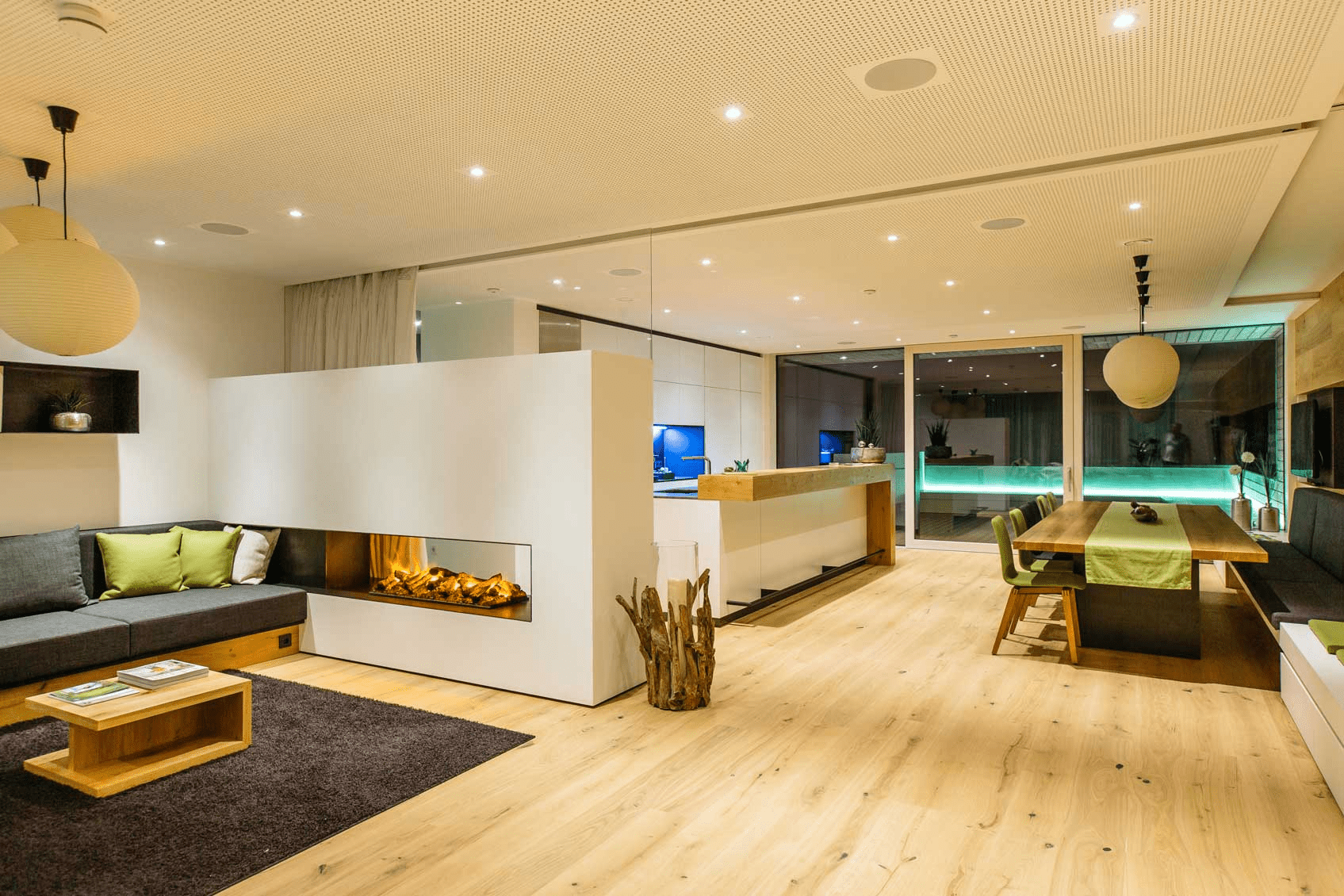In this article, we discuss the most important types of lighting and some common lighting techniques used in every hotel.
What types of Lighting are used in Hotels?
Hotels utilize several lighting styles and techniques to bring the space to life. You can use any of the hundreds of lighting options and mix them up to create a unique and functional design. But at its core, most hotel lighting setups fall into a few simple categories.
Ambient Lighting

Ambient light is the passive background light that evenly illuminates the entire space. Also known as mood lighting or general lighting, it is the basis for every lighting system. The goal of ambient lighting is not to create a bright or well-lit environment. Instead, it is there to counter the darkness.
Ambient light can be created using several different techniques and light fixtures. You can use indirect light from wall-mounted spotlights or direct light from a ceiling-mounted chandelier, to light up a room.
The intensity and brightness of your ambient lighting dictate the atmosphere of the space. Bright lights represent welcoming warm tones, ideal for hotel entrances. While dimmer lights create a cozy and homely feeling, ideal for bedrooms.
Task Lighting

The goal of task lighting is to highlight a specific section or working area and provide better illumination and visibility. While ambient light is used to uniformly illuminate the entire area, task lighting is only deployed in select areas. Thus, you will often see task lighting used in conjunction with ambient lighting to get the best of both worlds.
Desk lamps are the most common type of task lighting, but you don’t need to limit yourself to one type of light fixture. Ceiling-mounted downward lights with narrow beam angles are excellent for large spaces like a hotel reception desk.
Task lighting can also be deployed for bathroom sinks, bedside tables, and kitchen islands. If you have bright ambient lights, then you might not need specific task lights. But brighter ambient lights become irritating after a while and consume a lot more energy. Meanwhile, task lighting is used occasionally and doesn’t interfere with other light sources.



